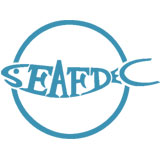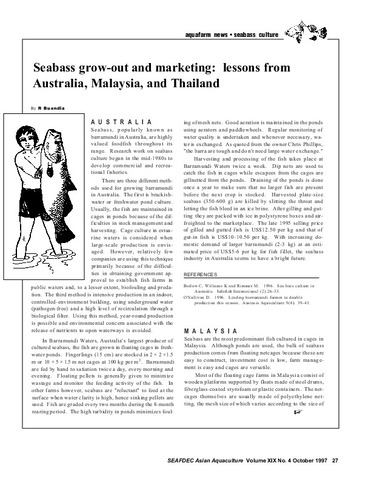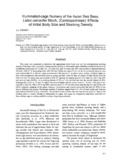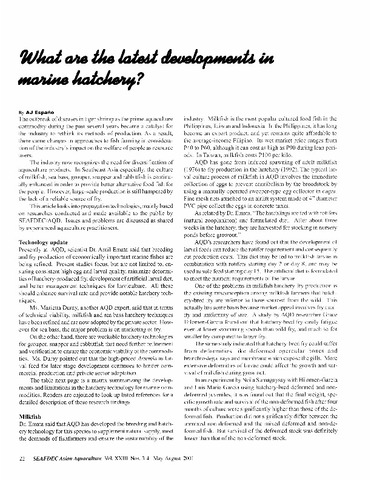Optimized feeding strategies in the larviculture of the Asian seabass Lates calcarifer.
Share
ບົດຄັດຫຍໍ້
This paper reports on the progress made at the Tigbauan hatchery of SEAFDEC in the Philippines, with the larviculture of the Asian seabass Lates calcarifer when using w3-HUFA enriched Brachionus and Artemia . In view of the high correlation between mouth size and total larval length, the feeding of different size classes of Artemia can be better programmed. The incorporation of the HUFA s 20:5w3 and 22:6w3 in the live prey Artemia , and possibly Brachionus , greatly improved larval ability to metamorphose, although it did not affect growth nor survival until day 21. However, when 21 day old fry were subjected to a stress test, much higher survival rates were obtained in HUFA-enriched seabass larvae, illustrating their superior physiological condition over fry cultured with non-enriched Brachionus and Artemia . These findings were used to propose an improved feeding strategy for the larviculture of Lates calcarifer .
ວິຊາ
food fish  ; larvae
; larvae  ; feeding
; feeding  ; cultured organisms; mouth
; cultured organisms; mouth  ; fatty acids
; fatty acids  ; Philippines
; Philippines  ; sea bass
; sea bass  ; Lates calcarifer
; Lates calcarifer 
 ; larvae
; larvae  ; feeding
; feeding  ; cultured organisms; mouth
; cultured organisms; mouth  ; fatty acids
; fatty acids  ; Philippines
; Philippines  ; sea bass
; sea bass  ; Lates calcarifer
; Lates calcarifer 
Taxonomic term
Collections
Related items
Showing items related by title, author, creator and subject.
-
Seabass grow-out and marketing: lessons from Australia, Malaysia, and Thailand
Buendia, Romeo (Aquaculture Department, Southeast Asian Fisheries Development Center, 1997) -
Illuminated-cage nursery of the Asian sea bass, Lates calcarifer Bloch, (Centropomidae): effects of initial body size and stocking density
Fermin, Armando C. (Asian Fisheries Society; World Aquaculture Society - Southeast Asian Chapter, 2000)This study was conducted to determine the appropriate initial body size and the corresponding stocking density of sea bass, Lates calcarifer, during nursery rearing in illuminated cages. Hatchery-produced sea bass fry of ... -
What are the latest developments in marine hatchery?
Españo, A. J. (Aquaculture Department, Southeast Asian Fisheries Development Center, 2001)





